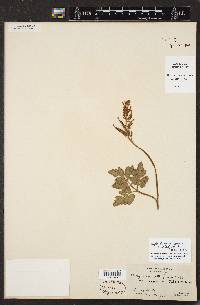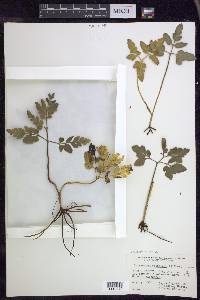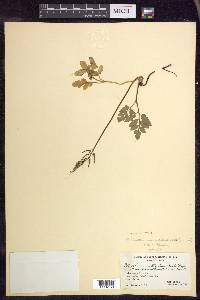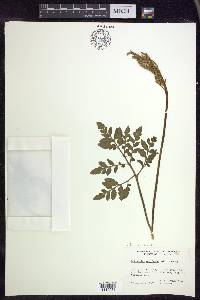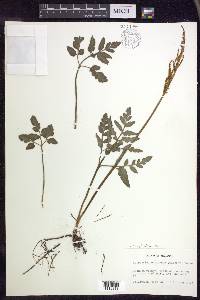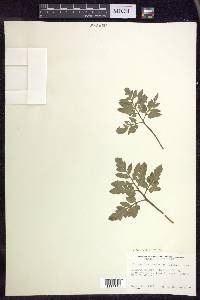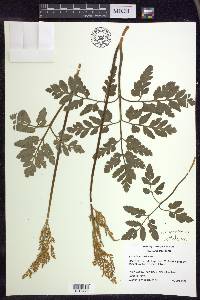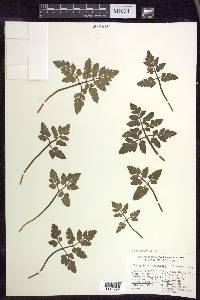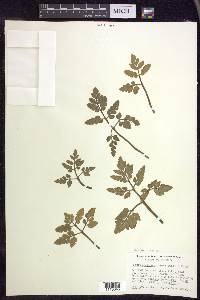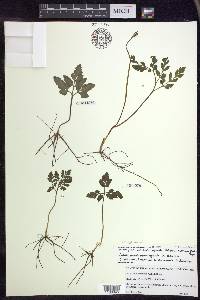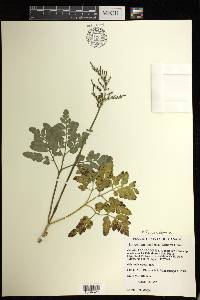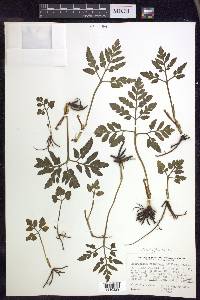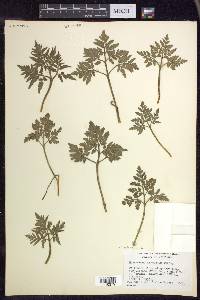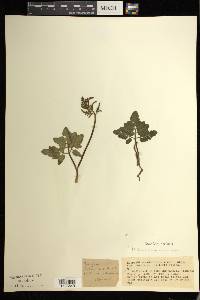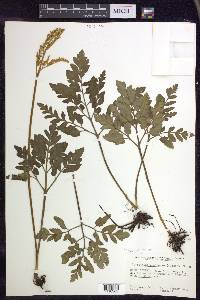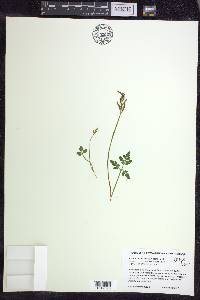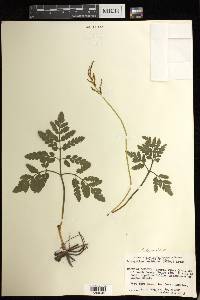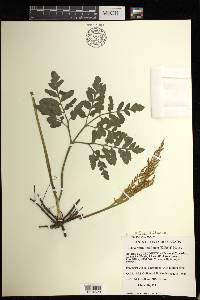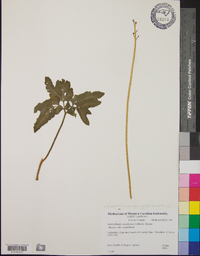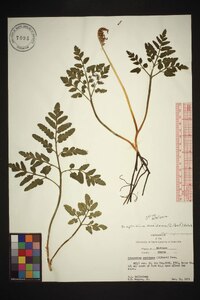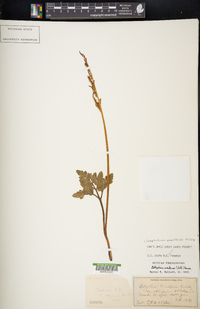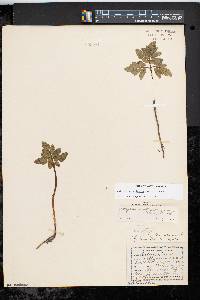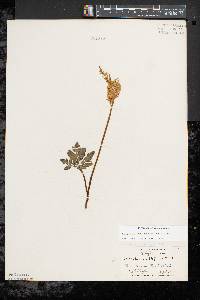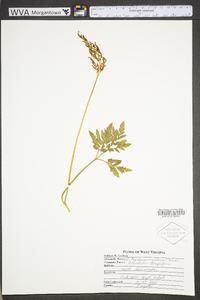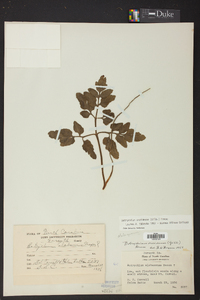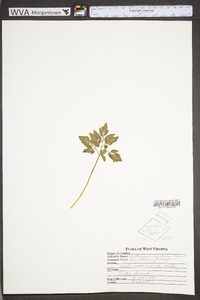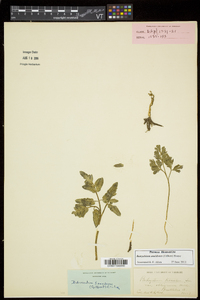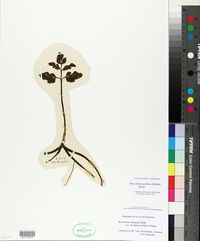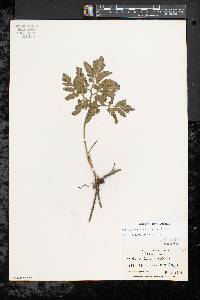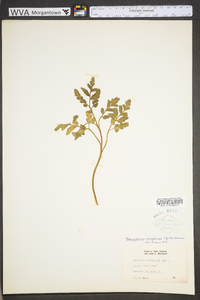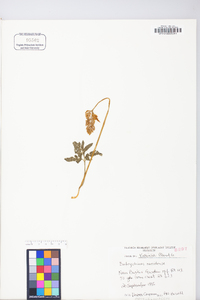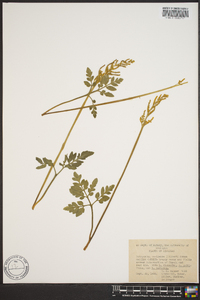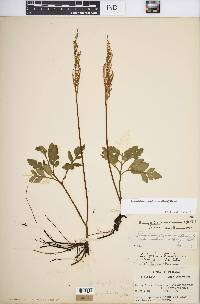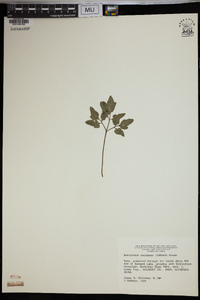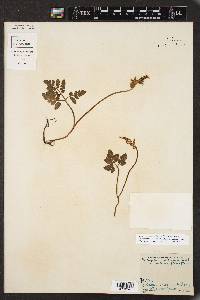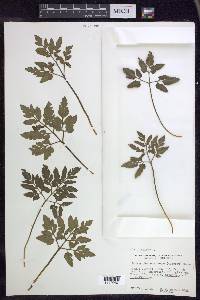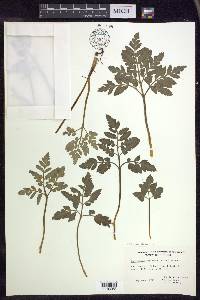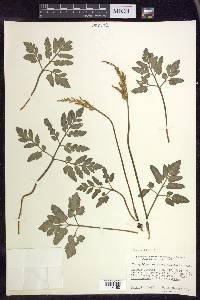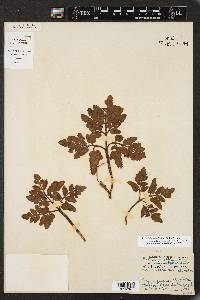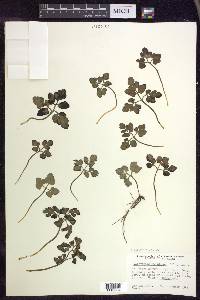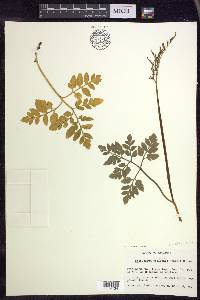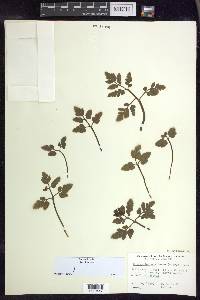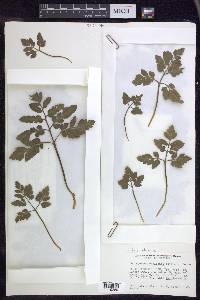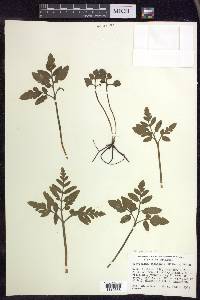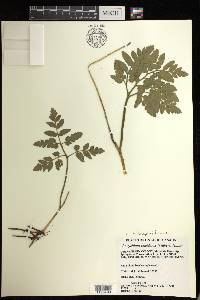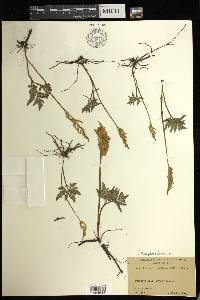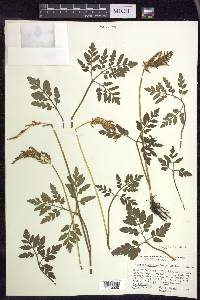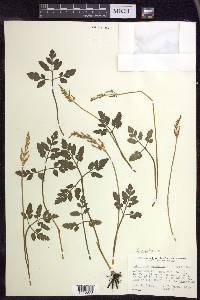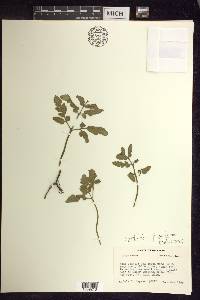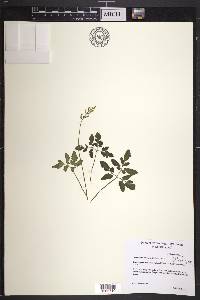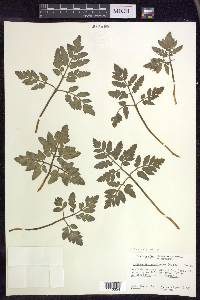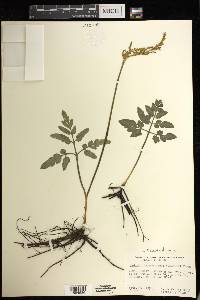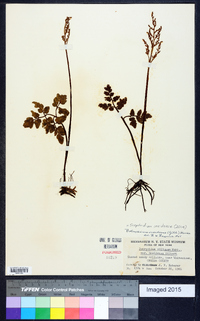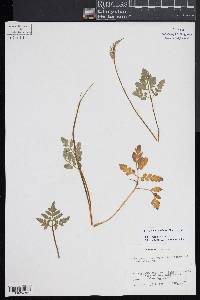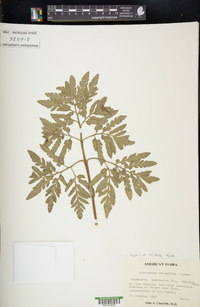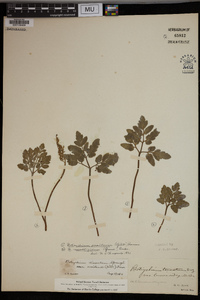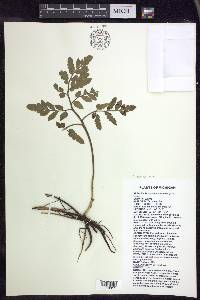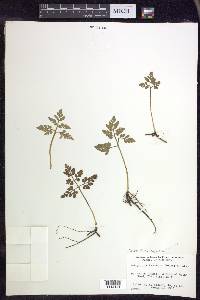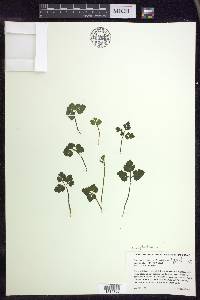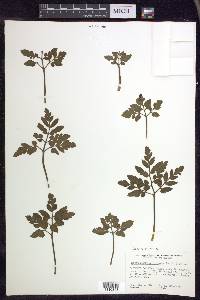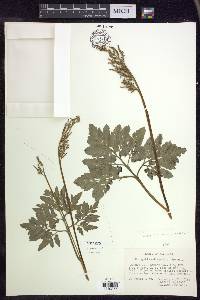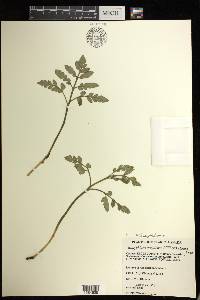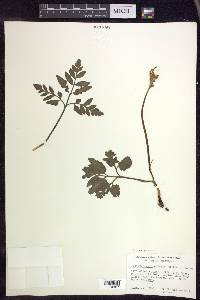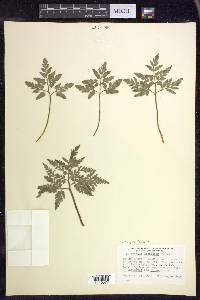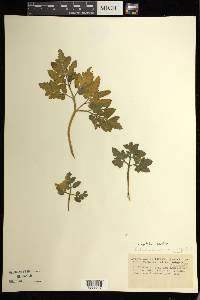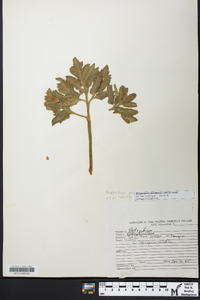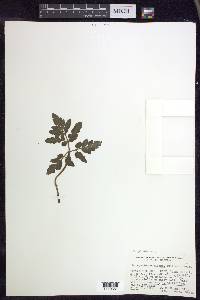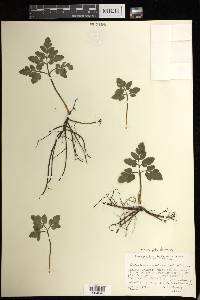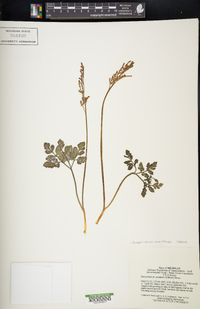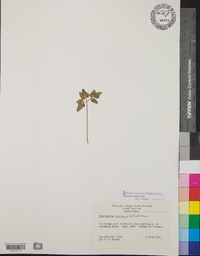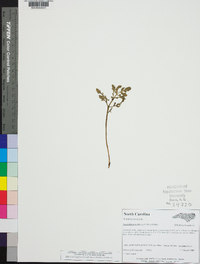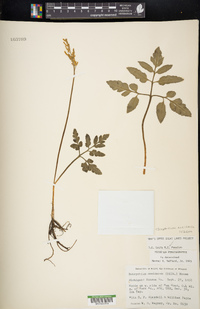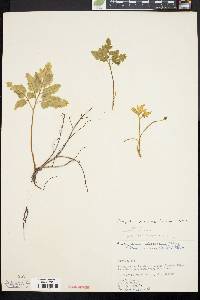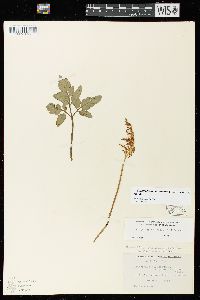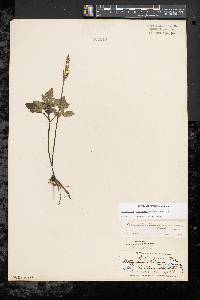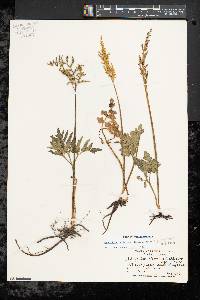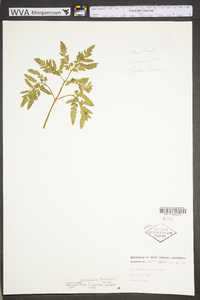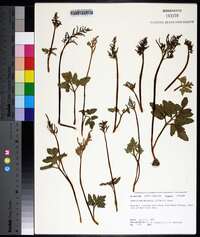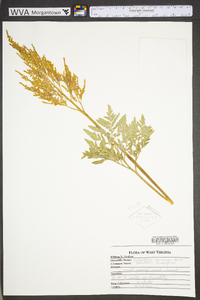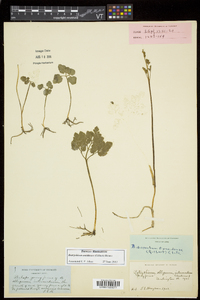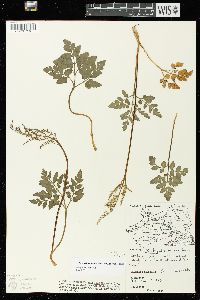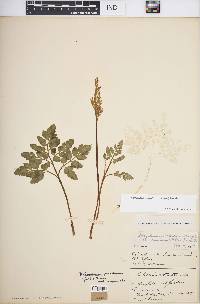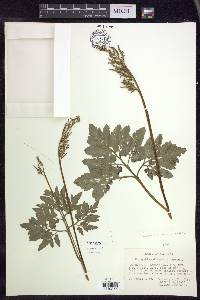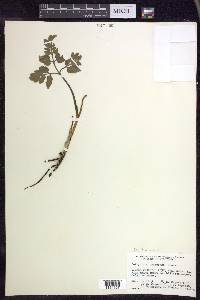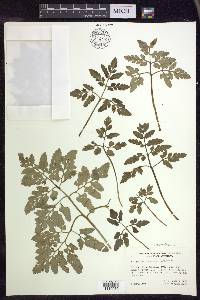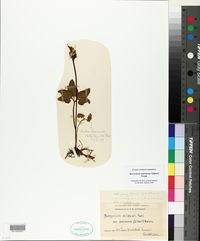
|
|
|
|
Family: Ophioglossaceae
Blunt-Lobe Grape Fern, more...blunt-lobed grapefern
[Botrychium dissectum f. oneidense Clute, moreBotrychium dissectum var. oneidense (Gilbert) Farw., Botrychium multifidum var. oneidense (Gilbert) Farw., Botrychium obliquum var. oneidense (Gilbert) Waters, Botrychium oneidense (Gilbert) House, Botrychium ternatum var. oneidense Gilbert] |
Trophophore stalk 2--15 cm, 1.5--2.5 times length of blade rachis; blade dull bluish green, ± plane, 2--3-pinnate, to 15 × 20 cm, ± leathery. Pinnae to 5 pairs, usually remote, horizontal to ascending, distance between 1st and 2d pinnae not or slightly more than between 2d and 3d pairs, undivided except in proximal 2/3--3/4. Pinnules obliquely ovate, margins finely crenulate to denticulate, apex rounded to acute, venation pinnate. Sporophores 2--3-pinnate, 1.5--2.5 times length of trophophore. 2 n =90. Leaves green over winter, sporophores seasonal, new leaves appearing in spring. In moist, shady, acidic woods and swamps; 0--1200 m; N.B., Ont., Que.; Conn., Del., D.C., Ind., Ky., Maine, Md., Mass., Mich., Minn., N.H., N.J., N.Y., N.C., Ohio, Pa., R.I., Vt., Va., W.Va., Wis. Botrychium oneidense commonly occurs with B . dissectum and B . multifidum . Young individuals of both may resemble B . oneidense (W.H. Wagner Jr. 1961b).
Perennial fern 10 - 75 cm tall Stem: single, upright, very short and inconspicuous, up to 5 mm in diameter with a thickened base (caudex). Spores: thousands per sac, all of one kind, three-sectioned (trilete), thick-walled, and with a bumpy or pimply surface. The spores give rise to the gametophyte (the sexual phase of the plant), which is broadly egg-shaped, unbranched, tiny (1 - 3 mm tall, 1 - 10 mm diameter), fleshy, not green, underground, saprophytic, and inhabited by symbiotic fungi (mycorrhizae). Leaf: one per stem, on stalk arising from an expanded, clasping base, which forms a closed sheath around stem apex. The single leaf is made up of two parts arising from a shared stalk: a sterile, green, expanded blade portion (trophophore); and a fertile, stalk-like, spore-bearing portion (sporophore). Leaves appear in spring and remain green even over winter. Roots: up to ten per plant, blackish, 1 - 4 mm in diameter, and originating 1 cm below the base of the plant. Similar species: Botrychium oneidense is probably most similar to B. dissectum, but in that species the sterile blade (trophophore) turns brownish in winter, and the final divisions (pinnules) of the trophophore are often very narrow and more elongate with finely cut edges, thus the trophophore can appear finely dissected. Botrychium rugulosum may appear similar as well, but that species has very wrinkled final divisions on the trophophore blade, the terminal pinnules are very similar in size to the lateral pinnules, and the pinnules are sharply toothed and also pointed at the apex. Also very similar is B. multifidum, but the trophophore of that species is usually shiny green, again the terminal pinnules are only slightly larger than the lateral pinnules, and the pinnules are almost non-toothed. Possibly somewhat similar is B. virginianum, but that species has the sterile portion of the leaf (trophophore) stalkless at the base of the fertile portion (sporophore), which is at least midway up the shared main stalk. Our other species have trophophore blades that are distinctly longer than wide. Habitat and ecology: Somewhat rare, in moist, shady, acidic woods and swamps. Occurence in the Chicago region: native Notes: This species used to be treated only as a variety under the name B. dissectum var. oneidense. It does commonly coexist with B. dissectum and B. multifidum, and the young plants may all look similar. Etymology: Botrychium is a diminutive of the Greek combination of botrys, a cluster of grapes, referring to the appearance of the fruiting cluster. Oneidense most likely refers to the Oneida Indian Nation. Author: The Field Museum Much like the less-dissected phase of no. 8 [Botrychium dissectum Spreng.], but the persistently green, 2-3 times pinnate blade with mostly obtuse or rounded ultimate segments, the major segments tending to be ovate; 2n=90. Rich, moist woods and swamps; N.B. to Ont. and Minn., s. to N.C. and Ind. Aug.-Nov. Gleason, Henry A. & Cronquist, Arthur J. 1991. Manual of vascular plants of northeastern United States and adjacent Canada. lxxv + 910 pp. ©The New York Botanical Garden. All rights reserved. Used by permission. From Flora of Indiana (1940) by Charles C. Deam According to Clausen's determination this variety occurs in De Kalb, Howard, Porter, and Steuben Counties. …… Indiana Coefficient of Conservatism: C = 9 Wetland Indicator Status: FAC |

